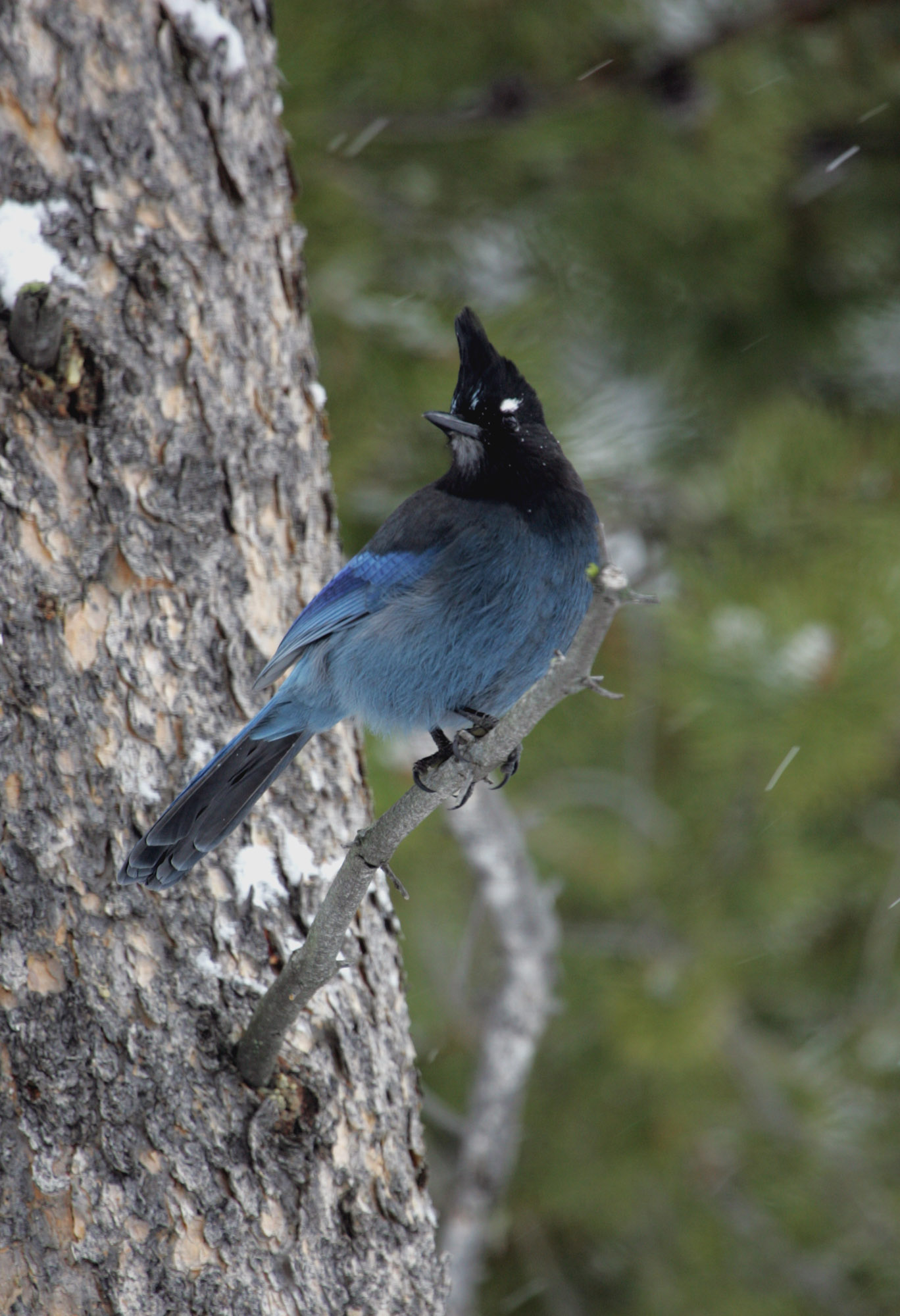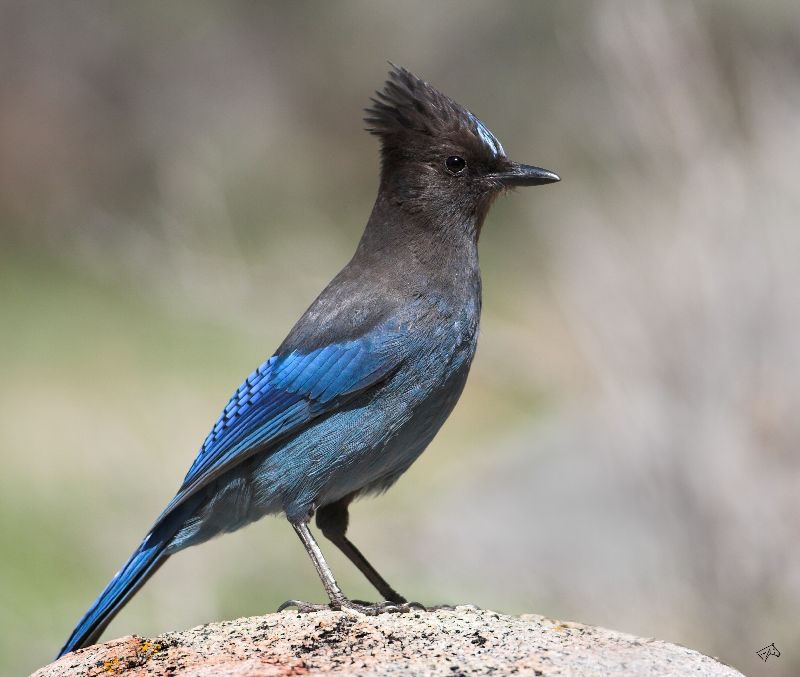Reproduction
Choosing a Mate
Steller’s Jays reproduce sexually by means of an egg. They do
something called sexual sidling to choose a mate. Sexual sidling
is the act of two jays strutting sideways
towards each other (Brown, 1963). Steller’s Jays tend to
choose a mate with similar behavioral characteristics. They choose to do this because it has
been found that partner similarity improves reproductive
performance (Gabriel and Black, 2012). These jays are
monogamous, meaning they have the same mate for a lifetime (CAC
2013), and after choosing their mate, Steller’s Jay
rarely separate.
When it comes to choosing a place to make a nest, both partners
have a say in it. Both partners choose the site of the
nest as well as engage in the building of the nest (AAB 2005).
Steller’s Jays do something with their nest that only one other
jay, the Blue Jay, does in North America. Steller’s Jays
use mud to help hold their nest together. Generally, the
nest is built into the shape of a cup, and built with stems,
leaves, mosses, sticks, and mud. The Jays then
line the inside of the nest with pine needles, soft roots, or
animal hair (AAB 2005). Steller’s Jays’ nests are often
found in conifers on horizontal
branches close to the trunk, but they can be found anywhere from the
base of the tree to the top of the tree. They have also been found
in the middle of bushes or shrubs very close to the ground (Brown,
1930). The nest sizes vary from ten to seventeen inches wide, six to seven inches tall, and
2.5 to 3.5 inches deep on the inside (AAB 2005).
Laying Eggs
When it comes to the laying of eggs, the female can only lay one
egg per day (ADW 2001), and between two and six in total
(Gabriel and Black, 2012). The eggs are fairly small,
being a little over an inch in height and a little under an inch
in width, and bluish-green in color with dark brown, purple, or
olive colored spots. The incubation period for
Steller’s Jays in about sixteen days (AAB 2005), but just like
the finding and building of the nest, both partners participate
in the incubating of the eggs. Females do the majority of
the work, but some males have been seen incubating eggs (ADW
2001). After the Steller’s Jays hatch, they have a sixteen
day nestling period, meaning they stay in the nest for sixteen
days (AAB 2005). Generally, their feathers grow in
about seventeen days (Gabriel and Black, 2012), and they are
capaable of flying three weeks after birth (CAC 2013).
of the eggs. Females do the majority of
the work, but some males have been seen incubating eggs (ADW
2001). After the Steller’s Jays hatch, they have a sixteen
day nestling period, meaning they stay in the nest for sixteen
days (AAB 2005). Generally, their feathers grow in
about seventeen days (Gabriel and Black, 2012), and they are
capaable of flying three weeks after birth (CAC 2013).
Protecting the Territory
Steller’s Jays are protective of their nests and the surrounding
territory, and they will even attack other jays
in their territory (AAB 2005). When Steller’s Jays have to deter a
predatory bird, they perform a defensive
strategy called mobbing (ADW 2001). Mobbing occurs when a flock of
Steller’s Jays fly aggressively toward a predatory bird like a Cooper ’s
Hawk, one of the jay's main predators (ADW 2001), in order to protect
their territory as well as their young (CAC 2013). Steller’s Jays
are a very social group of birds, and often form flocks. In fact,
Steller’s Jays sometimes form mixed-species flocks (AAB 2005).
These birds live a fairly long life, spanning about ten
years (CAC 2013). The oldest Steller’s Jay on record lived for
sixteen years and one month (AAB 2005).
Back to Adaptations Forward to Interactions

